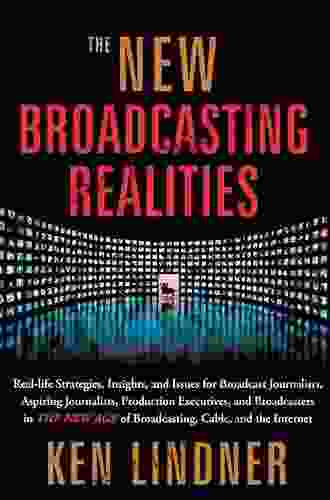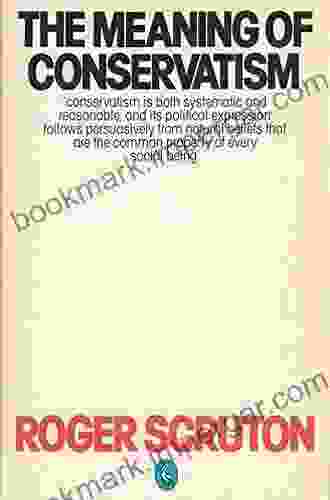Introduction

In the realm of data analysis, establishing causal relationships between variables is a fundamental challenge. Causal inference, the process of drawing inferences about cause-and-effect relationships from data, plays a pivotal role in fields ranging from medicine and social science to economics and engineering. To navigate this complex landscape, researchers rely on rigorous statistical methods and a deep understanding of causal reasoning.
The book "Causal Inference For Observational And Experimental Data" by Springer In Statistics provides a comprehensive guide to this essential field. Written by renowned experts in the field, this book offers a comprehensive and accessible to causal inference, equipping readers with the theoretical foundations, practical techniques, and real-world applications necessary to conduct robust causal analyses.
Understanding Causal Inference
Causal inference seeks to determine whether one variable (the cause) affects another variable (the effect). Establishing causality, however, is often challenging due to the presence of confounding factors—variables that influence both the cause and effect, potentially distorting the observed relationship.
4.7 out of 5
| Language | : | English |
| File size | : | 13770 KB |
| Screen Reader | : | Supported |
| Print length | : | 700 pages |
Observational Studies vs. Experimental Studies
Causal inference can be derived from either observational studies or experimental studies. In observational studies, researchers observe and collect data without actively manipulating the variables of interest. While observational studies can provide valuable insights, they are often prone to confounding bias, making it difficult to isolate the true causal effect.
In experimental studies, researchers manipulate the variables of interest and randomly assign participants to different treatment groups. This randomization process aims to control for confounding factors and establish a causal relationship between the treatment and the outcome.
Causal Estimands and Assumptions
Causal inference involves estimating causal effects, known as causal estimands. These estimands represent the average treatment effect or the difference in the outcome that would be observed if all individuals were exposed to a specific treatment.
To estimate causal estimands, researchers rely on various assumptions, such as:
- Consistency: The effect of the treatment is the same for all individuals.
- Ignorability: Confounding factors are balanced across treatment groups.
- No interference: Individuals in one treatment group do not affect the outcomes of individuals in other treatment groups.
Methods for Causal Inference
The book "Causal Inference For Observational And Experimental Data" covers a wide range of methods for conducting causal inference, including:
Propensity Score Matching
Propensity score matching creates a synthetic control group that is comparable to the treatment group on observed characteristics. This method helps reduce confounding bias by balancing the distribution of covariates between the two groups.
Inverse Probability Weighting
Inverse probability weighting assigns different weights to individuals in the treatment and control groups based on their propensity to receive the treatment. This method corrects for imbalances in the distribution of observed and unobserved confounders.
Regression Discontinuity Design
Regression discontinuity design exploits a discontinuity in the assignment of treatment based on a cutoff point. This method estimates the causal effect by comparing the outcomes of individuals who are just above and below the cutoff point.
Instrumental Variables
Instrumental variables are variables that influence the treatment assignment but do not directly affect the outcome. This method allows researchers to estimate the causal effect by using the instrumental variable as a proxy for the treatment.
Applications of Causal Inference
Causal inference has far-reaching applications in various fields:
Medicine
Causal inference is used to evaluate the effectiveness of medical treatments, identify risk factors, and make informed decisions about patient care.
Social Science
Causal inference helps researchers understand the impact of social policies, economic interventions, and educational programs on individuals and societies.
Economics
Causal inference enables economists to analyze the effects of economic policies, such as minimum wage laws, on employment and economic growth.
Engineering
Causal inference is used to optimize manufacturing processes, improve product quality, and enhance reliability in engineering systems.
"Causal Inference For Observational And Experimental Data" is an authoritative guide that provides a deep dive into the theory and practice of causal inference. With its comprehensive coverage of methods, applications, and case studies, this book is an invaluable resource for researchers, practitioners, and students who seek to understand and draw meaningful s from observational and experimental data.
Causal inference empowers us to make informed decisions, unlock the truth hidden within data, and drive progress in science, medicine, and society. By embracing the principles and methods outlined in this book, researchers and analysts can harness the power of causal inference to advance knowledge and improve the human condition.
4.7 out of 5
| Language | : | English |
| File size | : | 13770 KB |
| Screen Reader | : | Supported |
| Print length | : | 700 pages |
Do you want to contribute by writing guest posts on this blog?
Please contact us and send us a resume of previous articles that you have written.
 Book
Book Novel
Novel Page
Page Chapter
Chapter Text
Text Story
Story Genre
Genre Reader
Reader Library
Library Paperback
Paperback E-book
E-book Magazine
Magazine Newspaper
Newspaper Paragraph
Paragraph Sentence
Sentence Bookmark
Bookmark Shelf
Shelf Glossary
Glossary Bibliography
Bibliography Foreword
Foreword Preface
Preface Synopsis
Synopsis Annotation
Annotation Footnote
Footnote Manuscript
Manuscript Scroll
Scroll Codex
Codex Tome
Tome Bestseller
Bestseller Classics
Classics Library card
Library card Narrative
Narrative Biography
Biography Autobiography
Autobiography Memoir
Memoir Reference
Reference Encyclopedia
Encyclopedia J Stanley Edwards
J Stanley Edwards Hussein Banai
Hussein Banai J Keith Saliba
J Keith Saliba Ngozi Okonjo Iweala
Ngozi Okonjo Iweala Iain Jackson
Iain Jackson Kenneth N Brooks
Kenneth N Brooks Robert Pavlis
Robert Pavlis J R Oldfield
J R Oldfield J B Polley
J B Polley Howard Markel
Howard Markel J Alexander Tanford
J Alexander Tanford Jacky Trevane
Jacky Trevane Ilil Arbel
Ilil Arbel Jack Perricone
Jack Perricone Roger Cousens
Roger Cousens Howard P Boyd
Howard P Boyd Ian Doors
Ian Doors Megan Malone
Megan Malone Patrick Kelley
Patrick Kelley Stanley I Kutler
Stanley I Kutler
Light bulbAdvertise smarter! Our strategic ad space ensures maximum exposure. Reserve your spot today!

 Harold PowellLose Weight and Improve Your Health with the Simple Step-by-Step Guide to...
Harold PowellLose Weight and Improve Your Health with the Simple Step-by-Step Guide to...
 Billy PetersonUnleash Your Child's Potential: A Comprehensive Guide to Nurturing Children's...
Billy PetersonUnleash Your Child's Potential: A Comprehensive Guide to Nurturing Children's... Simon MitchellFollow ·15k
Simon MitchellFollow ·15k Dylan HayesFollow ·10.3k
Dylan HayesFollow ·10.3k Quentin PowellFollow ·9.6k
Quentin PowellFollow ·9.6k Gary ReedFollow ·13.8k
Gary ReedFollow ·13.8k Ralph EllisonFollow ·11.8k
Ralph EllisonFollow ·11.8k Julian PowellFollow ·19k
Julian PowellFollow ·19k Thomas PowellFollow ·13.8k
Thomas PowellFollow ·13.8k Melvin BlairFollow ·2.1k
Melvin BlairFollow ·2.1k

 Mike Hayes
Mike HayesUnlock Your Nonprofit Potential: A Comprehensive Guide to...
: Embarking on the Path to Impactful...

 Cody Russell
Cody RussellUnlock the Secrets of Captivating Radio Programming:...
In the fiercely competitive world of...

 Aron Cox
Aron CoxUnveiling the Enchanting World of Beth Inspired Eye...
A Realm of Imagination and Wonder Embark on...

 Felix Carter
Felix CarterUnlock the Secrets of Legal Publishing with West Hartford...
West Hartford Legal Publishing, the renowned...

 Henry Hayes
Henry HayesUnveiling the Secrets of the Panama Papers: Exposing...
The Panama Papers is a groundbreaking...
4.7 out of 5
| Language | : | English |
| File size | : | 13770 KB |
| Screen Reader | : | Supported |
| Print length | : | 700 pages |










